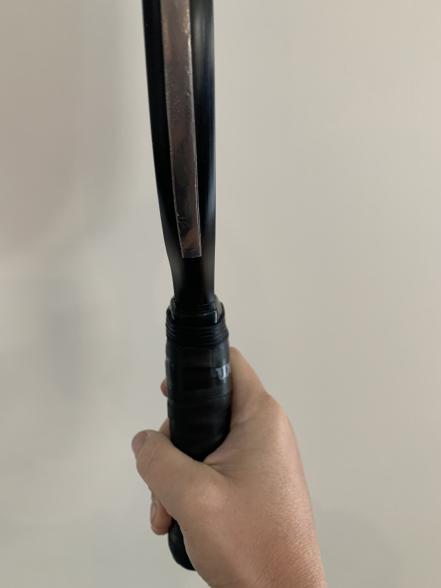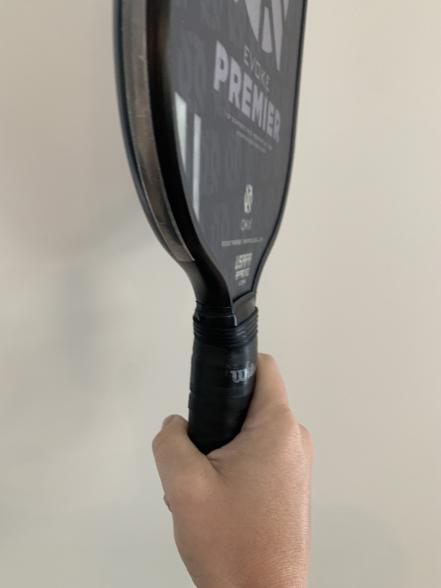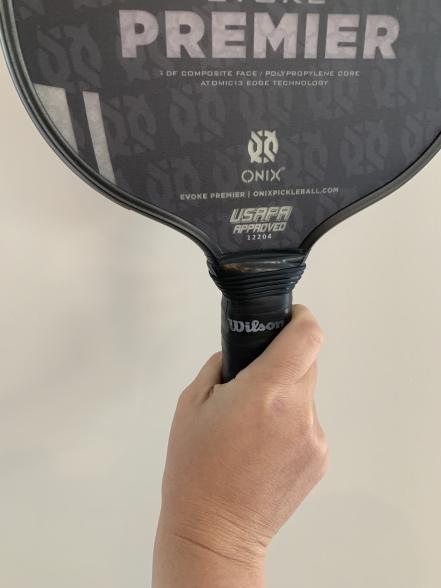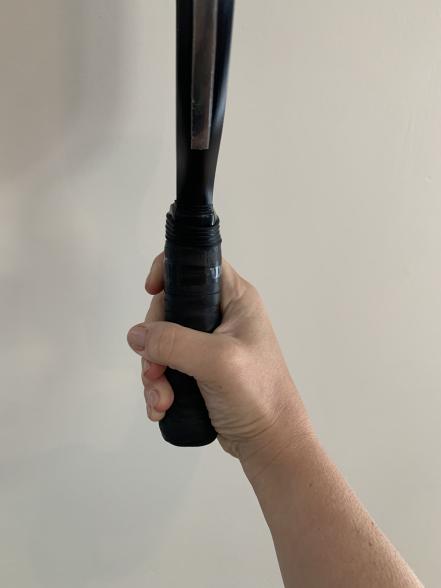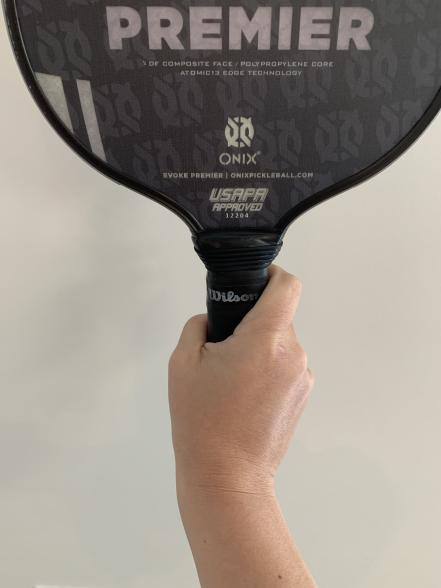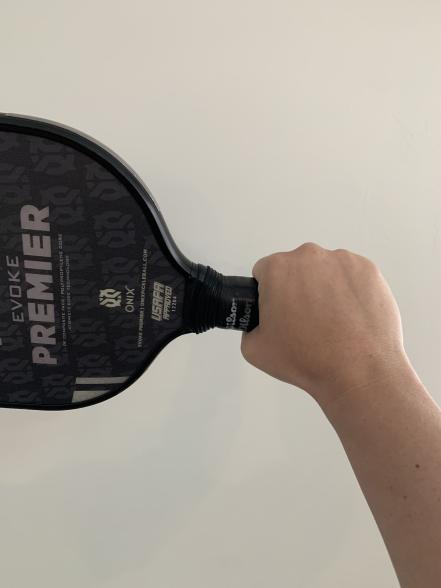If you’re new to pickleball or looking to improve your game, learning how to grip your pickleball paddle is a key skill that’s often overlooked. A good grip helps you maintain control over your paddle, make accurate shots, and prevent hand fatigue.
There are three primary grip types In pickleball: the continental, eastern, and western grip. Different grips give different shots more power and better accuracy, like continental for backhand and eastern for forehand strokes. A good grip also helps maintain control over your shots and prevents hand fatigue or injury. In fact, great pickleball players and pros fluidly switch between grip types as they play—giving them the extra edge to compete at the top.
By the end of this article, you’ll have a solid understanding of how to grip your pickleball paddle using these different techniques and which type of grip might work best for your playing style.
Importance of the Right Grip in Pickleball
Pickleball is a game that involves a lot of hand movement. Understanding the right way of using your hands to play the sport is the start to making your paddle feel like an extension of your hands. A good grip is comfortable, natural, and fluid.

NOTE: This article does not contain any instructions on how to recreate the grip with your hands. We believe that step-by-step instructions of how to position your hands can be easily confusing. So, instead, we recommend that you simply Google the grip you’re interested in or look at the pictures we’ve provided.
Here are the key reasons why having the right grip is important:
Instantly Improve Your Game
New players who feel awkward playing at first will immediately feel better once they figure out the right way to grip the paddle. Even if they’re already gripping it correctly, if the grip doesn’t complement their play style then they could still feel uncoordinated with the paddle.
Even though there are millions of pickleball players in the world, there’s a reason why there are only a few types of grips in the sport. It’s because the right grip technique works and it lets you hit better shots. Practicing the right grip for your play style will improve the accuracy and power of your shots.
Reduce Hand Fatigue and Avoid Injury
Using the right grip in pickleball can protect your hands from fatigue and injury.
Proper grip distributes the force of impact evenly across your hand and forearm, reducing the strain on your joints and muscles. A comfortable grip also lets you hold the paddle more securely, reducing as much vibration on your hand and wrist as possible. In turn, this prevents injuries like tennis elbow and wrist strains.
The Common Types of Pickleball Grips
There are three common kinds of gripping techniques in pickleball.
| Eastern Grip | Western Grip | Continental Grip | |
| Popularity | 5 | 2 | 4 |
| Difficulty | 3 | 4 | 2 |
| Comfort | 4 | 3 | 5 |
| Spin | 4 | 5 | 2 |
| Power | 4 | 5 | 3 |
| Best For | Neutral* | Topspin, Forehand | Backhand, Dinks |
| Worst For | None | Backhand | Forehand |
*The Eastern grip is Neutral for the “Best For” category because it’s a universal grip that works for almost all types of pickleball shots. The only caveat to this is that other grips perform better for other, specific shots.
NOTE: While the Western grip is rated at 5 for both Spin and Power, it’s impossible to hit a shot maximum speed and power at the same time. The Western grip is the best at producing both power and spin, but not at the same time.
Eastern Pickleball Grip
The Eastern grip is the most popular grip in pickleball and is ideal for beginners and intermediate players. It’s a universal or neutral grip, allowing players to hit both forehand and backhand shots with ease.
Best shots for Eastern grip: Forehand (mainly) and backhand shots.
Worst shots for Eastern grip: Power shots and strong backhand strokes.
Advantages of the Eastern pickleball grip:
- Universal or neutral grip
- Natural grip for forehand topspin strokes
- Ideal for beginners and intermediate players
- Most commonly used grip in pickleball
Disadvantages of the Eastern pickleball grip:
- Doesn’t generate the strongest backhand, especially for players who have strong backhand strokes
Western Pickleball Grip
The Western pickleball grip is less common than the Eastern and Continental grips. It involves holding the paddle handle with the fingers and using a more closed face for a downward angle when hitting the ball. The grip is sometimes referred to as the “frying pan” grip because it resembles how you may hold a frying pan when you flip a pancake.
Best shots for Western grip: Generating topspin on forehand and backhand shots. Also, hitting powerful shots quickly
Worst shots for Western grip: Slices or drop shots, also challenging to hit backhand shots with control
Advantages of the Western pickleball grip:
- Significant topspin on forehand and backhand shots
- Offers a lot of power and pace on shots
- Useful for serving and returning serve
- Allows you to grip the paddle closer to the end for more reach
Disadvantages of the Western pickleball grip:
- Requires lots of practice and skill
- Difficult to control the angle of the paddle during backhand shots
- Requires more wrist and arm strength to do general shots
Continental Grip
The continental grip is one of the most versatile grips in pickleball and is used by many players. The grip involves placing the base knuckle of the index finger on the top of the paddle handle, with the remaining fingers wrapped around the bottom of the handle. The angle of the knuckles on the hand is approximately 45 degrees to that of the handle of the paddle. This grip is sometimes called the “hammer” grip because it resembles how you might hold a hammer.
Best shots for the Continental grip: Backhand shots, serves, and volleys
Worst shots for the Continental grip: Forehand shots, high volleys
Advantages of the Continental Pickleball grip:
- Excellent for short shots that needs control and precision
- Easy to switch between forehand and backhand shots
- Great for quick reaction shots at the net
- More natural grip for players with a tennis background
Disadvantages of the Continental Pickleball grip:
- Won’t generate as much power and spin compared to other grips
- Not ideal for hitting high volleys
- May be more difficult to hit forehand shots with control
The Uncommon Types of Pickleball Grip
There are dozens of uncommon types of pickleball grips and a lot of them are underrated or almost undocumented. Thousands of pickleball players play the sport for years without ever hearing about the best types of gripping techniques, subconsciously creating their own ways to grip the paddle.
Semi-Western Pickleball Grip
The semi-western grip moves the hand towards the back of the paddle, with the base knuckle of the index finger almost at the other side of the handle. This grip is more commonly used in tennis, but can also be used in pickleball. The semi-western grip is particularly useful for generating topspin on forehand shots, but it may not be ideal for backhand shots, slice shots, volleys, or drop shots.
Best shots for the Semi-western grip: Forehand shots, generating topspin
Worst shots for the Semi-western grip: Backhand shots, slice shots, volleys, and drop shots
Backhand Eastern Pickleball Grip
The backhand Eastern grip involves holding the paddle with the same grip as the eastern forehand grip but turned 90 degrees for a backhand shot. This grip can help provide additional power and topspin for backhand shots. However, it can be challenging to control the direction of the ball and can limit the player’s ability to hit certain types of shots.
Best shots for the backhand Eastern grip: Backhand shots with power and topspin
Worst shots for the backhand Eastern grip: Shots that require more control or finesse, such as drop shots or dinks.
There are a lot more grips out there, like the pistol grip, hammer grip, finger grip, and even edge grip. These are all different variations of the common grip techniques we’ve talked about, and they all have their little advantages and disadvantages.
How to Choose the Right Pickleball Grip
When it comes to grip technique, there is no one-size fits all. It all depends on how comfortable you feel and how your grip elevates your style of play. The right grip should make you feel better when playing and improve the shots you’re trying to make.
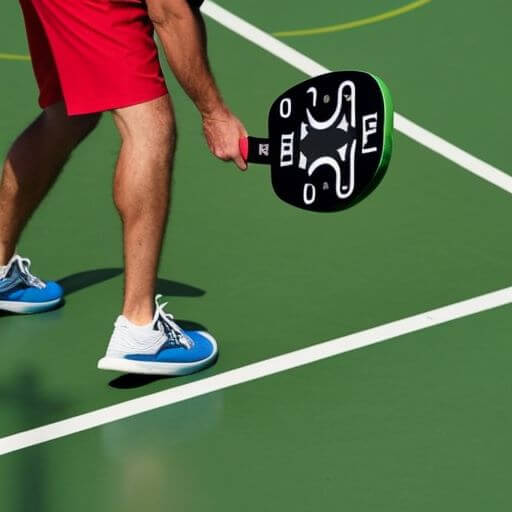
Playing Style
First and foremost, your grip should complement your playing style. If you’re more of a backhand player, try out the Western or Continental grip. Powerful players who want to swing as hard as they can will need an equally powerful grip. On the other hand, players who want more spin or technique will benefit from the Eastern grip.
Comfort and Quality of Play
Ask yourself, are you playing to enjoy the game or are you trying to improve and become a better player? If you’re just trying to enjoy the game, stick to the grip that makes you the most comfortable—even if it doesn’t amplify your play style. It’s much better for your enjoyment of the game to be comfortable and disadvantaged, rather than experiment, be uncomfortable, and potentially lose even more while you’re practicing.
Tips for Testing Different Grips
When testing different pickleball grips, here are some tips to keep in mind:

- Try different grip sizes: Start with the grip size that matches your hand size, but don’t be afraid to try a slightly larger or smaller size to see what feels best.
- Give it a few days: Resting is a key part of improving. Proper rest will allow your brain to absorb everything it learned from playing. That way, you’ll be able to properly see your improvement over a week or several days.


